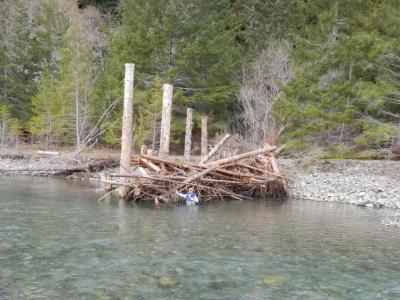Effectiveness Monitoring of Instream Restoration Projects – Lessons Learned and Where Do We Go from Here
Workshop Coordinators:
Bob Pagliuco, NOAA Restoration Center, Arcata CA
Ross Taylor, Ross Taylor and Associates
Restoration Project types and techniques are constantly evolving as we learn more about fish and habitat response to various types of restoration. Physical and biological monitoring at an individual project and larger watershed scale is essential to understanding these relationships. The purpose of this workshop is to explore various restoration project effectiveness monitoring approaches and learn how project and watershed level physical and biological data are helping us evaluate these projects. In addition, this workshop will have a panel discussion that explores existing monitoring data and provides input on what data would be most useful to collect in the future to advance restoration effectiveness science. Presentations in this session should focus on restoration effectiveness monitoring efforts for salmon and steelhead restoration projects and be prepared to explore ideas on where we need more effectiveness monitoring data to advance restoration science.
The Pudding Creek BACI Experiment: A Paired Watershed Approach to Effectiveness Monitoring
Elizabeth Mackey, Trout Unlimited
A Study of Aquatic Habitat and Fish Behavioral Response to Enhanced Flows in a Russian River Tributary
Gabe Rossi, UC Berkeley and McBain and Associates
Using Science to Guide Coho Restoration in the Middle Klamath River: If You Build it, They Will Come
Toz Soto, Karuk Tribal Fisheries Program
Tools and Methods to Monitor the Effectiveness of the Dry Creek Habitat Enhancement Project
Russian River Basin, Neil Lassettre, Sonoma County Water Agency
Differing Responses of Natal and Non-natal Juvenile Coho Salmon to Restoration Actions in McGarvey Creek, a Tributary to the Lower Klamath River
Jimmy Faukner, Yurok Tribal Fisheries Program
Annual, Seasonal, and Diurnal Variation in Fish use of Constructed Slough Habitat in the Mattole River Estuary
Nathan Queener, Mattole Salmon Group
Monitoring of Beaver Dam Analogues in the Scott River Watershed
Michael Pollock, NMFS Northwest Fisheries Science Center
Effectiveness Monitoring of Fish Passage Projects in California
Leah Mahan, NOAA Restoration Center
The Old Man and the SEE: Lessons Learned From 15 Years of Monitoring Coho Salmon Life History and Habitat Restoration Projects in the Stream-Estuary Ecotone
Michael Wallace, Environmental Scientist, CA Department of Fish and Wildlife
Temporal Patterns and Environmental Correlates of Young-of-the-Year Coho Salmon Movement into Non-natal Seasonal Habitats
Seth Ricker, California Department of Fish and Wildlife
Group Discussion on Effectiveness Monitoring Data Gaps, Priority and Geographic Needs, and Funding Opportunities

